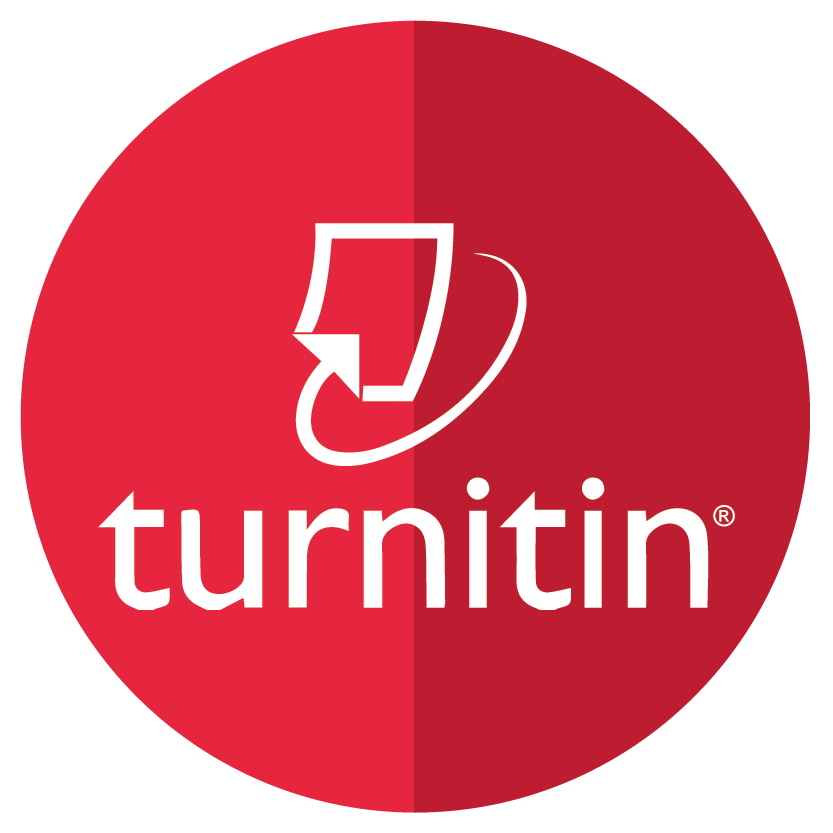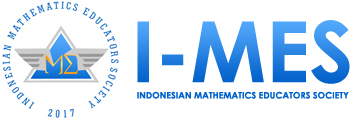PROSES BERPIKIR DIVERGEN PESERTA DIDIK DALAM MEMECAHKAN MASALAH MATEMATIK DITINJAU DARI TIPE KEPRIBADIAN MYER BRIGGS
Abstract
Penelitian ini bertujuan untuk mendeskripsikan proses berpikir divergen peserta didik dalam memecahkan masalah matematik ditinjau dari tipe kepribadian Myer Briggs. Jenis penelitian ini termasuk kualitatif dengan metode eksplorasi. Data dikumpulkan dengan menggunakan metode think aloud saat peserta didik mengerjakan soal test berpikir divergen. Subjek penelitian sebanyak 13 orang diambil dari peserta didik kelas VII SMP Negeri 2 Talaga tahun ajaran 2019/2020. Hasil penelitian menunjukkan sebanyak delapan peserta didik dapat melengkapi ukuran bangun yang terdapat pada soal nomor satu (aspek elaboration), lima peserta didik dapat membuat dua pertanyaan dengan jawaban tepat dari masalah yang disajikan (aspek flexibility), delapan peserta didik dapat membuat dua pertanyaan matematis dari permasalahan beserta jawabannya (aspek fluency), dan empat peserta didik dapat menghitung luas bangun yang tidak diarsir untuk permasalahan nomor dua dengan caranya sendiri (aspek originality).
Full Text:
PDFReferences
Simon A & Bock O 2016 Influence of divergen and convergent Thinking on visuomotor adaptation in young and older adults Human Movement Science 46 23–29
Gallagher J J 1985 Teaching the gifted child (Allyn & Bacon)
Simon A & Bock O 2015 Does Visuomotor Adaptation Proceed in
Stages? An Examination of the Learning Model by Chein and Schneider 2012 Journal of Motor Behavior 47(6) 503-508
Runco M A 2020. Divergent Thinking Reference Module in Neuroscience and Biobehavioral Psychology 356-361
Hass R W, Toub S T, Yust P, & Pasek H K 2015 What is creativity in young children? Poster presented at the Society for Research in Child Development Biannual Meeting March 19–21, Philadelphia PA
Wronska M K, Bujacz A, Gocłowska M A, Rietzschel E F & Nijstad B A 2018 Person-task fit: Emotional consequences of performing divergen versus convergent Thinking tasks depend on need for cognitive closure Personality and Individual Difference
Darbor K E 2010 Individual Differences in Creativity: How Different Processes and Mind-Wandering Influence Performance (Doctoral dissertation, University of Michigan)
Torrance E P 1981 Predicting The Creativity Of Elementary School Children (19581980) And The Teacher Who Made A Difference Gifted Child Quarterly 25 55-62
Runco M A 2011 Divergen Thinking Encyclopedia of Creativity 400-403
Kim K H 2006 Can We Trust Creativity Test? A Review of the Torrance Tests of Creative Thinking (TTCT) Creativity Research Journal 18(1) 3-14
Acar S & Runco M A 2012 Creative Abilities Handbook of Organizational Creativity 115–139
Guilford J P 1959 1959a Personality (New York: McGraw-Hill)
Pasztor A, Molnar G & Csapo B 2015 Technology-based assessment of creativity in educational context: the case of divergent thinking and its relation to mathematical achievement Thinking Skills and Creativity 18 32-42
Bahar A K & Maker C J 2011 Exploring the realitionship between mathematical creativity and Mathematical Achievement. Asia-Pasific Journal Of Gifted and Talented Education 3(1) 33-48
Sak U & Maker C J 2006 Depelovmental variationin children,s creative mathematical thinking as a function of schooling, age, and knowledge Creativity Reseach Journal 18 279-291
Emerson T L N, English L & McGoldrick K 2016 Cooperative learning and personality types International Review of Economics Education 21(1) 21–29
Rushton S, Morgan J & Richard M 2007 Teacher’s Myers-Briggs personality profiles: Identifying effective teacher personality traits Teaching and Teacher Education 23(4) 432–441
Harrington R & Loffredo D A 2010 MBTI personality type and other factors that relate to preference for online versus face-to-face instruction The Internet and Higher Education 13(1-2) 89–95
Saggino A, Cooper C & Kline P 2001 A confirmatory factor analysis of the Myers–Briggs Type Indicator Personality and Individual Differences 30(1) 3–9
Gardner W 1996 Using the Myers-Briggs Type Indicator to study managers: A literature review and research agenda. Journal of Management 22(1) 45–83
Furnham A 1996 The big five versus the big four: the relationship between the Myers-Briggs Type Indicator (MBTI) and NEO-PI five factor model of personality Personality and Individual Differences 21(2) 303–307
Janowsky D, Morter S & Hong L 1996 The Myers Briggs type indicator and psychiatric diagnosis. Biological Psychiatry 39(7) 527
Goldsmith R E 1985 Sensation Seeking and the Sensing-Intuition Scale of the Myers-Briggs Type Indicator Psychological Reports 56(2) 581–582
Drummond R J & Stoddard A H 1992 Learning Style and Personality Type Perceptual and Motor Skills 75(1) 99–104
Ginevra M C, Nota L, Heppner P P, Heppner M & Soresi S 2014 The Relationship of Personality Type, Problem-Solving Appraisal, and Learning Strategies Journal of Career Assessment 23(4) 545–558
Davies S J 2008 Psychometric testing: what is Myers Briggs? The Foundation Years 4(2) 81–82
Clinebell S & Stecher M 2003 Teaching Teams to be Teams: An Exercise Using the Myers-Briggs® Type Indicator and the Five-Factor Personality Traits. Journal of Management Education 27(3) 362–383
Aziz A, Kusmayadi T A & Sujadi I 2014 Proses Berpikir Kreatif dalam Pemecahan Masalah Matematika Ditinjau dari Tipe Kepribadian Dimensi Myer-Briggs Peserta didik Kelas VIII MTs NW Suralaga Lombok Timur Tahun Pelajaran 2013/2014 Jurnal Elektronik Pembelajaran Matematika 2(10) 1079-1093
Nurdiansyah E 2016 Pengaruh Kecerdasan Spiritual, Kecerdasan Emosional, Dampak Negatif Jejaring Sosial dan Kemampuan Berpikir Divergen Terhadap Hasil Belajar Matematika Peserta didik Journal Of Educational Science and Technology 2 171-181
Fuys D, Geddes D & Tischler R 1988 The Van Hiele Model of Thinking in Geometry among Adolescents Journal for Research in Mathematics Education Monograph 3(1)
Van de Walle J A 1994 Elementary School Mathematics: Teaching Devolementally (2 nd Edition) (New York: Longman
Bell F H 1978 Teaching and Learning Mathematics in Secondary School (Dubuque Iowa: Wm. C. Brown Company Publishers
Cohen R J, Swerdlik M E & Phillips S M 1996 Psychological testing and assessment: An introduction to tests and measurement (Mayfield Publishing Co)
Supratman 2015 Penalaran Analogi Saat Conjecturing dalam Mengkontruksi Irisan Kerucut (Disertasi: Program Studi Pendidikan Matematika Pascasarjana Universitas Negeri Malang Tidak Diterbitkan)
Wijaya L, Rochmad R & Agoestanto A 2016 Analisis Kemampuan Berpikir Kreatif Matematis Siswa SMP Kelas VII Ditinjau dari Tipe Kepribadian Unnes Journal of Mathematics Education 5(2)
Sitepu A S M BR 2019 Pengembangan Kreativitas Siswa (Guepedia Publisher)
DOI: https://doi.org/10.37058/jarme.v2i2.1661
Refbacks
- There are currently no refbacks.

This work is licensed under a Creative Commons Attribution-ShareAlike 4.0 International License.
Journal of Authentic Research on Mathematics Education (JARME)
Program Studi Pendidikan Matematika, Universitas Siliwangi
Jl. Siliwangi no. 24 Kota Tasikmalaya - 46115
email: [email protected]
e-ISSN: 2655-7762
Licensed under a Creative Commons Attribution 4.0 International License
StatCounter:
Detail
Indexed by :


.jpg)
.jpg)



